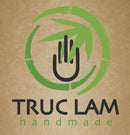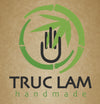DISCOVER MATERIALS FOR WEAVING AND EMBROIDERING OF THE TAI PEOPLE IN NGHE AN PROVINCE
Cotton (phài) and silk (may mọn) are the primary fibers used for weaving and embroidery among the Tai. In the past, most of Tai villagers grew cotton. According to Tai custom, women do almost all of the work of choosing land, sowing, tending, and harvesting cotton. Men help their wives and daughters only in clearing and fencing. Seeds retained from one year’s harvest are stored for the winter in a dry ground or cloth bag and hung over the hearth, where the smoke from cooking protects the seeds from vermin. Around the time of the Lunar New Year, Tai women choose the land they will use for planting cotton. According to Tai people’s experience, cotton may be cultivated in soil that is poor, often a mix of earth and sand at the foot of limestone mountains. Cotton may be planted on steep slopes but requires full sun. Seeds are sown in the second or third lunar month and harvested in the sixth lunar month. The quality of the soil determines how closely seed may be sown: typically, each planting hole is 50 centimeters from another and is planted with 5 to 7 seeds. Cotton is often interplanted with melons, but the cotton seeds may be sown earlier.

Image: Vietnam Museum of Ethnology, Tai Textiles in the Mekong region-continuity and change, 2006.
Cotton is a demanding crop with low capacity to resist bad weather and insects, so Tai people have to pay close attention to seasonal sowing and tending. The cotton field is protected by a fence. During the time of the harvest in the sixth lunar month, women have to be in the field everyday from early in the morning. After harvest, cotton bolls of the best quality (mác cốc) are used to weave fabric for clothing, and those of medium quality (mác cang) are used for cloth to make beddings; the lowest quality bolls (mác pai) are used to stuff the pillows and blankets. Cotton thread is used primarily for weaving and stuffing, rarely for embroidery.

Colorful hand-woven textile of the White Tai tribal
Silk (may mon) is used both for weaving and embroidery. The best time to raise silkworms is spring and autumn when the weather is cool. If it is too hot or too cold, the silkworms die easily because of low resistance to disease. The hard work of raising silkworms is expressed in the Tai proverb, “ Liệng mọn nhàm nao khừ ín xao hu nuốc” ( Raising silkworms in the winter is like flirting with a deaf girl ). After silkworm's eggs are hatched, the larvae are fed small pieces of mulberry leaves and grow gradually through five moulting. After the fifth moulting, the silkworms are placed in woven bamboo baskets or frames to spin their cocoons. The cocoons are boiled in water to kill the worm before it completes its metamorphosis and to soften the cocoon so the silk fiber can be easily be reeled off. The cocoon may either be yellow or white, and the silk fiber is the same color.
In recent years, Tai people have increasingly used silk thread purchased commercially, or synthetic thread, imported from Laos, Thailand, and especially China. Synthetic thread is especially popular for embroidery, where it produces a smooth and glossy result at lower cost than real silk. With greater and greater diversity of synthetic thread, or imported silk dyed with chemical dyes, recent years have seen a decline in the use of traditionally dyed silk threads.
Sources: Vietnam Museum of Ethnology, Tai Textiles in the Mekong region-continuity and change, 2006.



